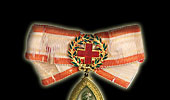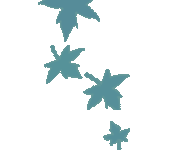
Instrument Kits
With the establishment of the
first formal training schools in Canada in the 1880s, nursing
became a profession based on a specialized body of knowledge.
Covered, among other topics, was how to use medical instruments.
Many of the instruments in the Canadian
Nursing History Collection shed light on nursing practice.
Thermometers, for example, indicate the critical role of the nurse
in measuring patients' fluctuations in temperature. Prior to the
availability of antibiotics, the correct sterilization of surgical
instruments meant the difference between recovery or death after
surgery; in the early days, nurses used an alcohol lamp for
sterilizing needles. Nursing procedures, such as administering
medications, giving hypodermic injections, administering enemas
or douches [e.g. douche cannula
2000.111.449],
and bandaging [e.g. bandage scissors
2000.111.494.10]
are all represented in the collection.
One of the five nurses' instrument bags, for example, is a
leather pouch belonging to Ruth Vivian Hart [nurse's kit
2000.111.492.1]
of the Royal Victoria Hospital in Montreal, dated 1919. It
contains glass vials, a weighing scale, a beaker and a set of
instruments including probes, forceps and scalpel. The
collection includes eight syringe kits [e.g. syringe case
2000.111.117.1;
syringe
2000.111.117.2 a-g].
|







